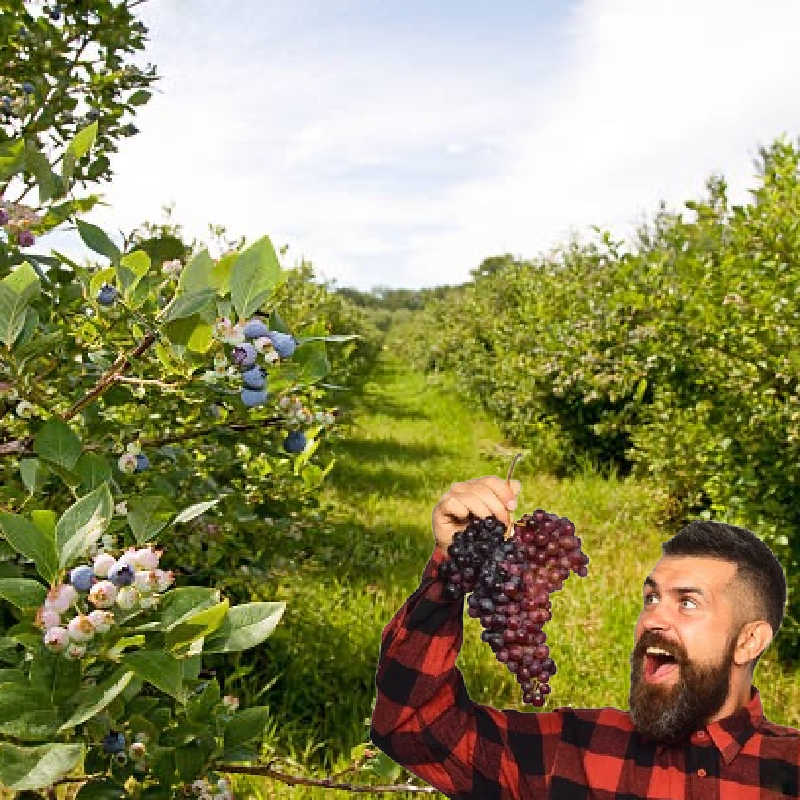
How to Identify Edible Wild Plants and Berries
How to Identify Edible Wild Plants and Berries: A Survivalist’s Guide to Foraging with Confidence
Estimated reading time: 8–10 minutes
Keywords: edible wild plants, identify wild berries, foraging safety, bushcraft, survival food, natural edible plants, wild food identification, wilderness survival, backcountry foraging
Introduction: The Wild Pantry is Open
Picture this—you’re deep in the woods, maybe you’re on a weekend bushcraft adventure or a full-on backcountry survival trek. You’ve got limited rations and hunger is creeping in. But look around: Nature’s pantry is all around you. The trick? Knowing what’s safe to eat and what might leave you wishing you hadn’t.
Learning how to identify edible wild plants and berries is not only a vital survival skill, but it also enhances your connection to nature and adds some wild flavors to your outdoor meals. Whether you're a seasoned survivalist, a curious prepper, or a hiker who just likes to snack on the trail, this guide will give you expert insights—and a little fun—on the dos and don’ts of wild foraging.
Why Foraging Is a Skill You Should Master
Before we dig into leaves and berries, let’s talk about why this matters:
-
Self-reliance: Knowing how to forage reduces dependence on packed food.
-
Emergency prep: In a crisis, edible plants can mean the difference between survival and starvation.
-
Sustainability: Foraging responsibly promotes harmony with the ecosystem.
-
Culinary adventure: Wild foods offer flavors you won’t find at the grocery store.
Foraging Golden Rule: "When in Doubt, Leave It Out"
Let’s be crystal clear: Some wild plants and berries are toxic—even deadly. Identifying the right ones takes observation, patience, and practice.
So before you pop anything in your mouth, remember this mantra:
"When in doubt, leave it out."
Step-by-Step: How to Identify Edible Wild Plants
Here’s a field-tested breakdown to keep you safe and fed in the wild.
1. Learn the Universal Edibility Test (UET)
This test takes time—up to 24 hours—but if you're truly unsure, it's a life-saver:
-
Separate the plant into parts: roots, stems, leaves, buds, flowers, fruit.
-
Smell it. If it smells like almonds (cyanide), skip it.
-
Touch test: Rub a bit on your inner wrist or lips. Wait 15 minutes.
-
Taste test: Place a tiny bit on your tongue, hold 15 minutes, chew, wait.
-
Swallow test: If no reaction after a few hours, try a small serving and monitor for sickness.
Note: This method is a last resort. The better option is to learn your region’s safe edible plants in advance.
2. Stick with Known Edibles First
Here’s a list of common, easy-to-identify wild edibles found across much of North America:
❖ Dandelion (Taraxacum officinale)
-
Parts to eat: Leaves, roots, flowers
-
ID tips: Bright yellow flowers, jagged leaves in a rosette pattern
-
Flavor: Bitter, like arugula
❖ Chickweed (Stellaria media)
-
Parts to eat: Entire above-ground plant
-
ID tips: Small white star-like flowers, juicy stem, grows in clusters
-
Flavor: Mild, slightly sweet
❖ Wood Sorrel (Oxalis spp.)
-
Parts to eat: Leaves and flowers
-
ID tips: Heart-shaped, clover-like leaves with a citrusy tang
-
Warning: Contains oxalic acid – safe in small amounts
❖ Plantain (Plantago major)
-
Parts to eat: Young leaves and seeds
-
ID tips: Broad oval leaves with five parallel veins
Top 5 Edible Wild Berries and How to Spot Them
1. Blackberries (Rubus spp.)
-
Look for: Arching thorny stems, clusters of dark purple-black berries
-
Season: Summer to early fall
-
Taste: Sweet, tart, classic berry flavor
2. Wild Strawberries (Fragaria virginiana)
-
Look for: Small red berries close to the ground with three-leaf clusters
-
Season: Late spring to early summer
-
Taste: Intense strawberry flavor
3. Elderberries (Sambucus nigra)
-
Look for: Bush with umbrella-like clusters of small dark berries
-
Caution: Unripe berries and leaves are toxic. Only eat cooked ripe berries.
4. Serviceberries (Amelanchier spp.)
-
Look for: Tree/shrub with round purple-blue berries and smooth edges
-
Taste: Like blueberries with a hint of almond
5. Mulberries (Morus spp.)
-
Look for: Trees with dangling clusters of dark berries that stain fingers purple
-
Note: Easily mistaken for inedible lookalikes—ID the tree, not just the fruit
Foraging Safety Tips (Do Not Skip These)
-
Know your location: Different regions host different edibles. What’s safe in Florida might not grow in Montana.
-
Avoid polluted areas: Never forage near roads, industrial areas, or sprayed zones.
-
Use a guidebook: A field guide specific to your region is a must.
-
Practice ethical foraging: Never take more than you need, and leave roots so plants can regenerate.
-
Beware of lookalikes: Poisonous plants often mimic edibles—double check!
Common Poisonous Plants to Avoid
❌ Deadly Nightshade (Atropa belladonna)
-
Glossy black berries and bell-shaped flowers—highly toxic.
❌ Poison Hemlock (Conium maculatum)
-
Looks like wild carrot but has purple spots on stem—deadly.
❌ Pokeweed (Phytolacca americana)
-
Young shoots sometimes eaten when properly cooked, but berries and mature plant parts are toxic.
When in doubt, pull out your guidebook or phone for a quick cross-reference—or just skip it altogether.
Gear That Helps Foraging on the Go
A few handy tools make foraging safer and easier:
-
Bushcraft Knife – For clean cuts and root harvesting
-
Field Guide or App – Identify plants with photos
-
Foraging Pouch or Basket – Breathable carry bags prevent spoilage
-
Gloves – Protect from stings, thorns, or poisonous sap
-
Notebook or Journal – Track what you find and where
💡 Pro Tip: Keep a laminated foraging cheat sheet in your backpack. It’s waterproof, lightweight, and potentially life-saving.
Final Thoughts: Foraging Is a Lifelong Journey
Identifying edible wild plants and berries isn’t something you master overnight. It’s a continuous learning process that sharpens your instincts, deepens your survival knowledge, and just makes outdoor life more enjoyable.
Plus, there’s something ancient and satisfying about harvesting your own wild salad or berry snack from the forest floor. So go out there, start small, stay safe, and respect nature’s bounty.
Ready to Level Up Your Survival Skills?
At Better Bushcraft, we don’t just sell survival gear—we live it. Check out our foraging knives, bushcraft tools, and field-tested packs to equip your next wild adventure.

